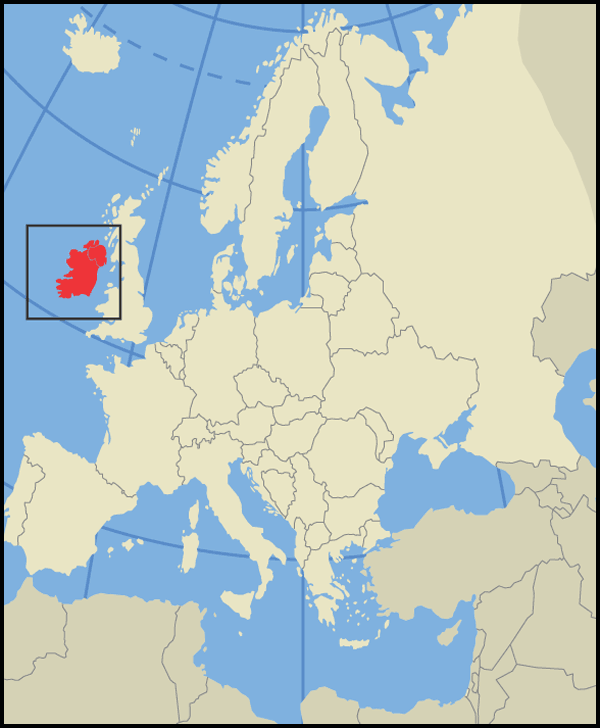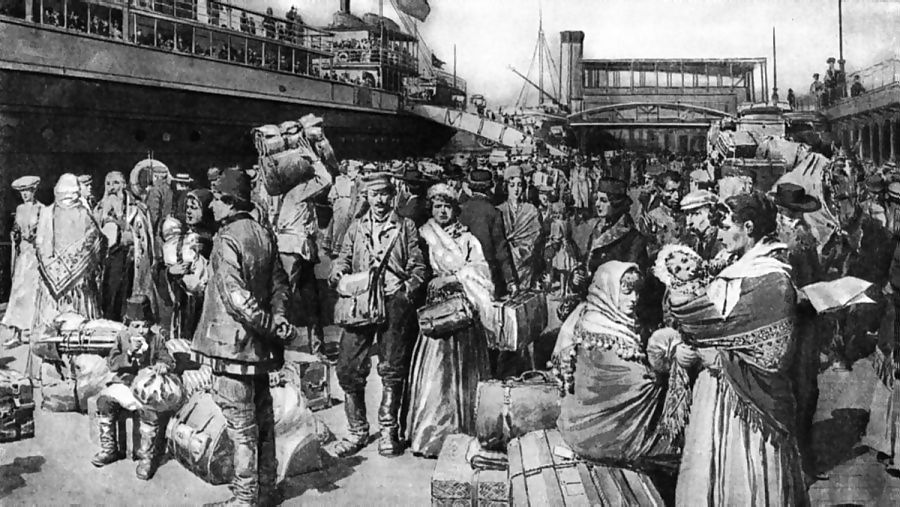Step One
Completion requirements
 Ireland
IrelandAfter the summer of 1845, which was especially wet and rainy, a mysterious blight appeared in Ireland. It laid waste to the potato fields almost overnight and ruined the crops. The leaves of the potato plants turned black and potatoes that seemed healthy enough when first dug up rotted while in storage. Potatoes were a staple food in Ireland, so because of the famine people had little to eat and starvation and disease spread throughout the country.
Landlords in cities and towns began to evict their poorer tenants because they could not pay rent because they could not make money by farming, sending families into the countryside with only the clothes on their backs. During the entire period of the Great Famine of 1845-50, more than a million Irish died.
Some landlords saw the famine as a great opportunity to rid their land of pesky and rebellious Irish tenants and their unprofitable potato fields and to turn the land into more profitable cattle farms. About 50,000 Irish received passage money from their landlords. Some crossed the ocean gladly while others were herded onto leaky ships meant to transport goods like lumber and cattle rather than human beings.
 Hundreds of thousands of other Irishmen appealed to their relatives already in the United States and Canada to send passage money and scraped together their last cents to buy tickets. In the years of the Great Famine and directly after, more than 2.5 million Irish came to the United States which constituted almost 30% of Ireland’s population. Most of them arrived completely penniless. They were dumped on America’s shores, often sick and malnourished. Initially, they had no money to travel beyond their ports of arrival, so places like New York City and Boston were overwhelmed with Irish immigrants. Almost all were unskilled and many were illiterate. They had no money to buy farms, so they had to take the worst jobs.
Hundreds of thousands of other Irishmen appealed to their relatives already in the United States and Canada to send passage money and scraped together their last cents to buy tickets. In the years of the Great Famine and directly after, more than 2.5 million Irish came to the United States which constituted almost 30% of Ireland’s population. Most of them arrived completely penniless. They were dumped on America’s shores, often sick and malnourished. Initially, they had no money to travel beyond their ports of arrival, so places like New York City and Boston were overwhelmed with Irish immigrants. Almost all were unskilled and many were illiterate. They had no money to buy farms, so they had to take the worst jobs. The jobs they were given were almost always the most dangerous. On Southern building projects, Irishmen were often used for the most dangerous jobs because slaves were worth money and Irishmen could be easily replaced.
The Irish immigrants of the famine years created America’s first real slums. These new slums horrified middle class urban Americans who saw the Irish as destroying their cities and breeding diseases. The fact that these new immigrants were a drain on the existing social welfare system also did not endear them to old Americans. Many Americans were truly prejudiced against the Irish because they believed that they were violent drunks and they also feared their Catholic religion.
Despite being discriminated against, the Irish worked very hard to establish themselves and became very politically active. They received support from the Catholic Church and eventually successfully integrated themselves into American society. Their efforts helped build America into what it is today.
Now that you have read about the Irish, please continue by watching the video below:
Last modified: Monday, July 30, 2012, 7:51 PM